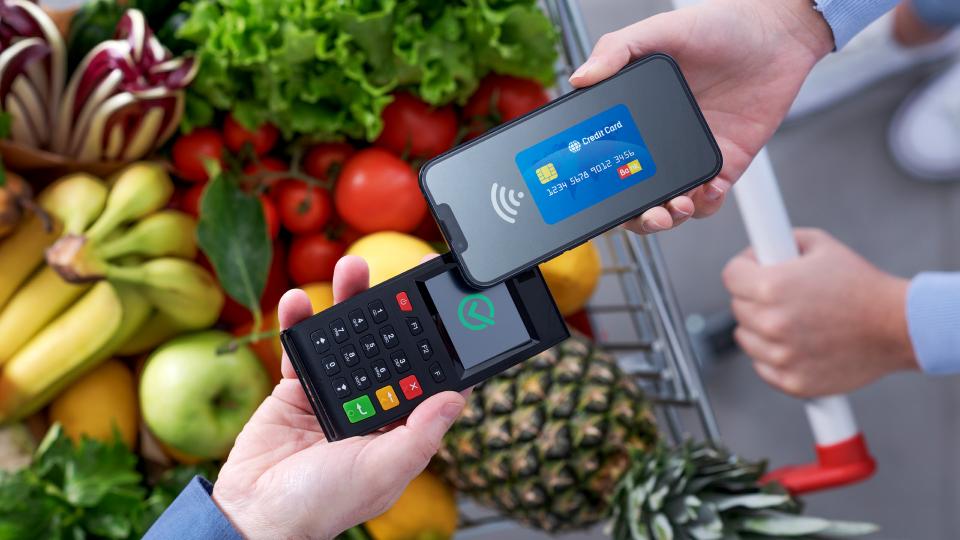.
Amidst everything a business owner has to worry about, setting the price of a product is always a reason for indecision, many bills, looking at the market and an extensive list of variables.
We are not going to go into the administrative and accounting focus of pricing here, which are issues that, in addition to being complex, can vary enormously depending on the business model and even its size.
Our discussion is about how it can, in addition to the areas above, be decisive in terms of the company’s commercial and Marketing policies and what aspects must be considered to be successful.
The impacts of the Internet on prices
The Internet has had different impacts on the prices of everything and anyone who has been around before its popularization knows very well what we are talking about.
In the past, a price survey before buying anything involved “beating your leg” in the trade of a region, in the stores of a mall or, at most, resorting to a classified telephone directory and after a few phone calls, deciding on who had the lowest price. price.
As a result, the same item only needed to be competitive in terms of monetary value with nearby competitors, after all, most people wouldn’t cross town to buy from someone who offered it cheaper, unless the difference was too great, or if it were A small city.
With the Internet and especially with the popularization of powerful smartphones and better connection speeds with the world wide web, checking whether a price of a product is in line with what the market practices takes just a few seconds.
It even made it possible to show the seller that it is more expensive: “look at the price your competitor has!”.
And that’s not all. The same Internet gave rise to a new group of competitors, formed by those that only exist in the digital environment and that, for this reason, have lower costs than physical businesses, reflected in lower prices.
Finally, the Web has also changed the behavior of consumers, who in many situations no longer see face-to-face purchases as essential and accept waiting a few days to get the product, especially the new generations.
Added to all this, the advantages that can be had:
- The price comparison sites were created with the exact purpose of making virtual “leg kicks” easier;
- Reviews from other consumers, with emphasis on Google Reviews, which sometimes also allow us to know the price, but above all, whether the consumption experience is satisfactory and in line with the monetary value;
- Another benefit that literally takes the potential customer out of the commercial establishment is the convenience of buying without having to leave home, face traffic, queues at the checkout and other inconveniences of the physical purchase process;
- The speed with which the purchase can be made, which in the past, depending on where a product was purchased, could literally take hours, now takes a few minutes;
- Social networks boosted nominations, as well as giving voice and reach to detractors;
- The service channels (attendance chat, e-mail, etc.), the FAQs, the product pages, the product evaluation channels, contributed to clarifying the interested parties and clearing up any possible doubts regarding the characteristics and benefits of the products. products;
- Barriers or even geographical borders are no longer a limitation for acquiring anything. You can buy anything, from virtually anywhere in the world.
- Micro and small companies can have almost the same reach as a multinational.
In other words, electronic commerce and the technologies that orbit around this way of doing business, made many of the justifications for the price of things collapse.
If you prefer, low price – at least compared to its competitors – has become even more important in the purchase decision.
At this point, some or many will ask, but what about value?
When does value not matter?
One of the first things you learn in Sales is that value is closely linked to price.
For that reason, value always matters.
Unlike price, value is the benefits that a product or service delivers to consumers. It’s how well a brand of washing powder washes clothes compared to others, using the same amount of product. Or who knows, how fast, efficient and courteous is the service provided by an employee of a company, in relation to the market.
The more you deliver, the more value you add and the greater your willingness to pay higher prices.
But there are situations where this does not apply.
Taking the example of washing powder, if you sell brand “X” and your neighbor does too, the vast majority of people tend to buy from those who sell it at the lowest price, even if the cashier at the cheapest market is not as smiling as of the most expensive.
It’s exactly the same product, and many shoppers are even willing to “stand up” to a grimmer cashier in exchange for saving just 50 cents!
But it’s not just that kind of situation.
Who is not and who has never been your customer, will not enter your store or complete the purchase on your website, if your price is not the lowest and which is supposedly justifiable by a long list of benefits that you intend to deliver.
In other words, the consumption experience that you are willing to provide needs to be experienced in order to be valued. Those who didn’t have it, don’t see it. That simple!
Seen in yet another way, lower price, is a decoy.
It is for this reason that supermarkets always have offers of high consumption products, to make customers enter the store. And often, in regions where there is a lot of competition, the “war” is for pennies.
In the minds of those who are responsible for shopping at home, this small savings of a few cents on each product, in the sum of everything, makes a difference and even justifies a queue when paying or a store that is not as beautiful and organized as the competitor’s “careiro”.
8 tips on how to use price to bring customers
Now that it’s clear that it’s not always possible to add value to justify higher prices compared to your competitors, you might be wondering how to use them to your advantage.
The first tip comes precisely from our last example.
1. Negotiate with suppliers
Among the many roles of market buyers, it is classic to negotiate greater discounts with suppliers, in exchange for larger orders than usual, in such a way that it can be passed on to end customers, without having to “sacrifice” the profit margin.
Almost invariably, products on sale have a much higher quantity than brands that are not on sale.
2. Larger quantities
Another classic tip is the well-known take 3 and pay 2.
Through this type of promotion, count how many units of a product each customer must buy, so that one unit is free.
But care must be taken, because in this type of price campaign, the unit price cannot be disclosed and, therefore, outside the eligibility to receive the discount, based on the value of the promotion, under penalty / risk of injuring the CDC (Code of Consumer Protection).
It is necessary to make clear to consumers the value of the unit purchase, if they so choose.
3. Cross selling
Another type of action aimed at price, which even the industry practices, is to induce cross selling by supplying product kits.
Cross selling, which in direct translation, are cross sales, is to sell other related products and in this case, the value of each one is lower than what is paid, if they are purchased separately.
Some industries encourage the practice, providing kits in single packages that bring together the products.
4. Marketing
“Low price is the best marketing”, said many merchants since the time of our grandparents.
But it is not just a question of simply assigning the lowest possible price, but working with consumers on the offer.
Once again, this is a “lesson” duly learned and practiced by the markets, which are concerned with having banners and posters with the biggest promotions in a visible place, with the purpose of making the customer enter the establishment.
Once inside, it’s easier to persuade customers to buy other things.
Many segments have also learned their lesson, such as bars, which offer chopp and beer at lower prices, and happy hour promotions, reducing the unit profit margin, but recovering in quantity and in the sale of other products.
After all, it’s hard to resist that portion that passed by smoky with a delicious aroma and was placed on the next table, to accompany the cold one, isn’t it?
5. Conquer new customers
As we said before, there is no way to show the value that your business can deliver if you cannot attract the market’s attention to your business.
How much do you invest in other actions that are not related to price, to try to seduce consumers?
Have you tried giving up that investment, even if only for a while, by converting it to lower prices?
In apps like iFood, in the first purchase of some restaurants, the amount is almost symbolic, in an attempt to attract new customers, who over time will not only pay for that first order, but will also provide the intended return.
6. Loyalty
There are those who say that customers are only loyal to their own pockets.
It was partly due to this belief that loyalty programs were created and that they do not necessarily need sophisticated – and expensive – systems and a whole technological structure, such as cards.
Pizzerias have created their own loyalty program, through coupons at checkouts and for every 10 units, you are entitled to a free pizza.
Initiatives of this type and when well conducted, manage to produce more sales and even increase the average ticket.
7. Inventory turnover
Virtually any shopkeeper knows that taking care of inventory turnover is extremely relevant, after all, idle stock can have a series of consequences on the financial health of the business.
Unfortunately, some only learn their lesson when they see perishable goods close to expiry date, or when products are stranded because they have become obsolete or less desirable due to the launch of new ones. Or worse, when the price charged is higher than the competition.
There are many “invisible” or not so apparent costs in large inventories and shelves full of goods that do not rotate. This is one of the many management lessons from the East, which translates into models such as just-in-time.
When you are able to put these costs at the tip of your pencil, it is time to transfer them to prices and make the merchandise rotate.
8. E-commerce
The Internet produced a generation of entrepreneurs accustomed to much lower costs and even the elimination of fixed costs that physical businesses were used to, such as maintaining a commercial point.
What some still don’t realize is that the digital transformation of their businesses is not just about joining social networks and starting to use them to do business as well.
There are some related issues with the way things are done:
- Also, selling over the Internet, in the case of those who still maintain the physical business, sometimes consists of just changing the service provided to the digital medium and not reaching customers who were not reached before. In this scenario, not only were there no cost reductions, but they also increased;
- Not everyone is on social media. Some companies bet only on networks and with that give up 25% of Brazilians who don’t even have access to the Internet and 30% who, even though they do, are not on any social network;
- Even believing they are on the Web, they still maintain analog processes. Without digitization, there is no digital transformation, only some analogue tools are replaced by their digital counterparts, but the efficiency of what is done remains low, affecting costs and, consequently, prices;
- Depending only on social networks and not having your own e-commerce or unrelated to them, means submitting exclusively to their policies.
Conclusion
It is possible and important to have a competitive pricing policy that contributes to attracting customers, following some simple and basic tips.
.









